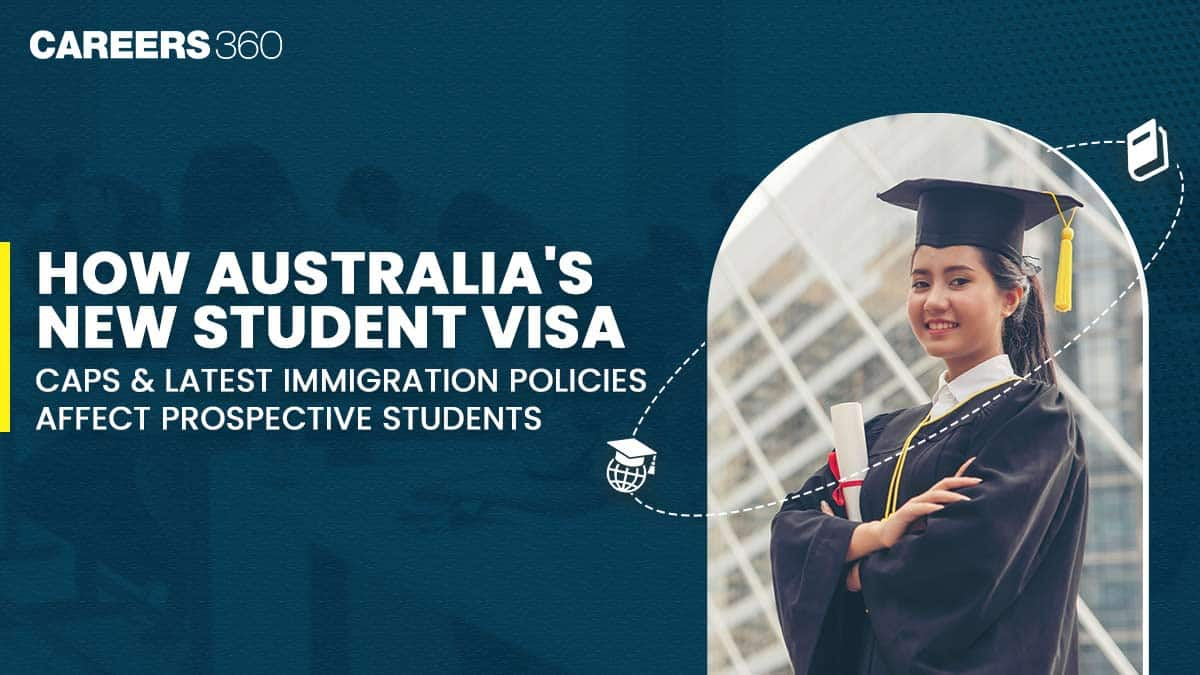How Australia's New Student Visa Caps and Latest Immigration Policies Affect Prospective Students?
Australia has always been a popular choice for international students for higher education. It is known for its excellent education, great post-study work options, and pathways to permanent residency. But recently, the Australian government introduced a number of changes aimed at controlling the high number of international students coming to study in Australia. These changes include increasing the cap limit for student visas, increasing student visa fees, introducing the document checklist toolkit, introducing new English language proficiency exams and more. As the Indian student community is the second largest in Australia, prospective students will be affected by the latest immigration policies in Australia. Read this article to understand how Australia's new student visa caps and latest immigration policies affect prospective students.

Australia New Rules for International Students
The new immigration rules in Australia for international students were introduced last year. The impact on the prospective students, especially from India is high. Some of these major changes include:
Increased Cap: The cap on student enrolments might rise from 270,000 to 295,000 in 2026. Public universities will be able to welcome up to 145,000 international students, while private institutions can admit 30,000.
Higher Australian Student Visa Fees: The fees for the Australian student visas increased to AUD 2,000, making it the highest in the world.
Mandatory CoE: Applicants are required to submit a Confirmation of Enrollment (CoE) instead of just a Letter of Offer.
Genuine Student (GS) Test: All applicants will need to demonstrate that their primary purpose is to study in Australia by meeting new GS requirements.
Financial Proof: Students must provide evidence of AUD 29,710 in savings, along with funds for their first-year tuition and airfare.
New English Tests Accepted: The CELPIP General, LanguageCert Academic, and Michigan English Test (MET) are now acceptable in Australia. However, keep in mind that online tests are not accepted.
Also Read
Impact of New Immigration Rules in Australia on Prospective Students
The changes introduced have a larger impact on the international students planning to study in Australia. These reforms enhance the transparency and credibility of Australia’s education system, but they also make the visa process more expensive, document-heavy, and selective for aspiring students. These are as follows:
More Opportunities: With the enrolment cap set to increase in 2026, more international students, particularly from India, will have the chance to gain admission to Australian universities.
Higher Financial Burden: The rise in visa fees to AUD 2,000 has increased the application costs, which could be a challenge for those considering short-term or budget-friendly programs.
Stricter Application Process: The new requirement for a Confirmation of Enrollment (CoE) means that only students who are officially admitted can apply, helping to remove fraudulent applications.
Selective Visa Screening: The introduction of the Genuine Student (GS) requirement means that applicants will need to clearly demonstrate their intent to study, making the application process more competitive.
Increased Financial Proof: Students are now required to show AUD 29,710 in savings, in addition to covering tuition and airfare, which again increases the costs for applicants on stricter budgets.
Conclusion
Australia's recent changes to immigration and visa policies will make the international education process more organized and selective. While the new student cap opens up more opportunities, the increased visa fees, tougher eligibility checks, and stricter financial proof requirements can make things a bit challenging. For students looking to study in Australia, particularly those from India, it is going to be important to plan carefully, gather documentation, and submit their application as per the new regulations.
Also Read
Frequently Asked Questions (FAQs)
Your Australian student visa application can be rejected if you fail to meet the requirements of the application, provide false information or documents, or do not meet the financial requirements as per the new immigration policy in Australia for international students etc.
Australia is accepting international students. It has introduced new immigration policies for international students. These policies will impact the incoming students and will make the application process challenging and selective.
The Australian government announced a cap or limit on the number of international students coming to Australia. The Government claims that this cap will improve the integrity and sustainability of international education. This will also help to control migration numbers in the future. However, recently, it was announced that the cap limit will be increased in 2026.
Applications for Admissions are open.
Want to study in Ireland? Explore Universities & Courses
Study in Canada
ApplyExplore Universities, Courses & Subjects | Work while study
Study in UK
ApplyApply for upcoming intake & plan your journey
Study in USA
ApplyUniversities inviting applications | Get expert guidance
Study in Australia
ApplyShortlist best ranked universities & get expert guidance
